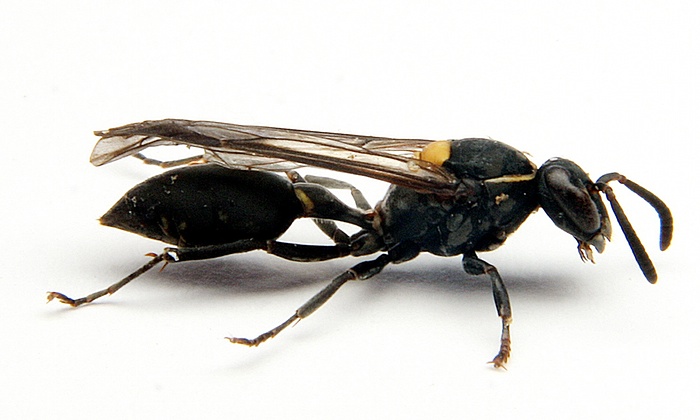

Usually, we try to avoid stinging creatures. Although they play an important part is nature, it’s almost an instinct to run when you hear that “buzz.” This may not be the right reaction in all cases, though. Scientists from Leeds University and São Paulo State University have actually found a way to harness the toxins in the venom of the Brazilian wasp (Polybia paulista) and use them to combat certain cancers.
And don’t worry. These scientists aren’t suggesting you just walk into a wasp nest and hope for the best.
Intelligent Venom:
The wasp’s venom contains a “smart drug” that is aptly named. The specific toxin, known as MP1, is able to seek out and destroy tumor cells in the body while ignoring healthy cells. The venom acts like a weapon, blowing “gaping holes” in the membranes of tumor cells.
Specifically, the toxin destroys the outer protective layer by interacting with lipids, resulting in important molecules leaking out of the cell. In seconds, these RNA and proteins escape the cancerous cells, causing them to die.
The cancerous cells store the specific susceptible lipids on the outside of their membrane, while noncancerous cells store the lipids on the inner membrane. This is how healthy cells avoid destruction during treatment.
Future Uses:
Dr Paul Beales, a researcher from Leeds University, said that this treatment, “would be an entirely new class of anti-cancer drugs.
There are many ways in which harnessing this new therapy would be useful in cancer treatment, especially when multiple drugs are used simultaneously. For example, the venom can target the cell membrane while another drug can attack different parts of the cell.
Using a toxin to attack the fatty cell membrane has been shown to suppress the growth of prostate and bladder cancer cells. It even has an effect on leukemia cells that are otherwise resistant to drugs.
Modification and Dangers:
Scientists hope to study MP1’s structure, and even modify it, in order to improve its potency and selectivity. They plan to alter its amino acid sequence to see how the toxin’s structure relates to its function. It’s also important to be sure that MP1 won’t attack healthy cells before the treatment is widely used.
Another important factor to be considered is the role of the toxin as an allergen. Even if the toxin kills cancerous cells, it could have a significant effect on the body as a whole if the patient is severely allergic to the venom.
For now, researchers are exploring the best ways to treat these reactions. The initial cancer-treatment studies were published in the Biophysical Journal.